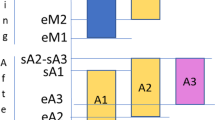Abstract
The need to adjust productive capacity to seasonal demand and the increasing flexibility in the distribution of annual working hours has given rise to new problems with respect to the organisation of staff working time. This paper presents a problem of planning annual working hours, in which the number of weekly working hours for any worker must belong to a previously agreed finite set and holiday weeks are the same for all the staff members. The problem is modelled and solved as a mixed integer linear program.
Similar content being viewed by others
References
Campbell, G.M. and M. Diaby. (2002). “Development and Evaluation of an Assignment Heuristic for Allocation Cross-Trained Workers.” European Journal of Operational Research 138, 9–20.
Clutterbuck, D. (1982). “After Flexible Hours, Now it's Flexiyears.” Int. Mngmnt 37(3), 31–36.
Corominas, A. and J. Crespán. (1993). Organització del temps de treball. Edicions UPC.
Corominas, A. and R. Pastor. (2000). “Manpower Planning and Scheduling in Services with Seasonal Demand.” In J.A.D. Machuca and T. Mandakovic (eds.), Proceedings of the I World Conference on Production and Operations Management. Sevilla.
Corominas, A., A. Lusa, and R. Pastor. (2002a). “Characteristics and Classification of the AnnualisedWorking Hours Planning Problems.” International Journal of Services Technology and Management (to be published).
Corominas, A., A. Lusa, and R. Pastor. (2002b). “UsingMILP to Plan Annualised Working Hours.” Journal of the Operational Research Society 53(10), 1101–1108.
Corominas, A., A. Lusa, and R. Pastor. (2003). “Using a MILP Model to Establish a Framework for an Annualised Hours Agreement.” Working paper IOC-DT-P-2003-01, Universitat Politècnica de Catalunya, Barcelona.
Corominas, A., A. Lusa, R. Pastor, and A. Sánchez. (2002). “Planning Annualised Hours with a Finite Set ofWeeklyWorking Hours and Cross-Trained Workers.”Working paper IOC-DT-P-2002-22, Universitat Politècnica de Catalunya, Barcelona.
Cox, J.R., T. (1989). “Towards the Measurement of Manufacturing Flexibility.” Production and Inventory Management Journal, First Quarter, 68-72.
Curran, P. (1992). “Annual Hours Brings Productivity Boost to Spicers.” Mngmnt Services, July, 32-33.
Gerwin, D. (1987). “An Agenda for Research on the Flexibility of Manufacturing Processes.” International Journal of Operations and Production Management 7(1), 39–49.
Grabot, B. and A. Letouzey. (2000). “Short-Term Manpower Management in Manufacturing Systems: New Requirements and DSS Prototyping.” Comput. Indust. 3(1), 11–29.
Hung, R. (1999a). “A Multiple-Shift Workforce Scheduling Model under Annualized Hours.” Naval Res. Logist. 46(6), 726–736.
Hung, R. (1999b). “Scheduling a Workforce under Annualized Hours.” Int. J. Prod. Res. 37(11), 2419–2427.
Lint, J.H.V. and R.M. Wilson. (1992). A Course in Combinatorics. Cambridge University Press.
Lynch, P. (1995). “Annual Hours: An Idea Whose Time Has Come.” Personnel Mngmnt, November, 46-50.
MacMeeking, J. (1995). “Why Tesco's New Composite Distribution Needed Annual Hours.” Int. J. Retail Distrib. Mngmnt 23(9), 36–38.
Mazur, L. (1995). “Coming: The Annual Workweeks.” Across the Board 32(4), 42–45.
MES. (2000). Ministére de 1'Emploi et de la Solidarité, www.35h.travail.gouv.fr, 20/10/2000, France.
Oke, A. (2000). “Linking Human Resource Flexibility with Manufacturing Flexibility: Enablers of Labour Capacity Flexibility in Manufacturing Plants.” In J.A.D. Machuca and T. Mandakovic (eds.), Proceedings of the I World Conference on Production and Operations Management, Sevilla.
Slack, N. (1991). The Manufacturing Advantage. Mercury Books.
Author information
Authors and Affiliations
Rights and permissions
About this article
Cite this article
Corominas, A., Lusa, A. & Pastor, R. Planning Annualised Hours with a Finite Set of Weekly Working Hours and Joint Holidays. Annals of Operations Research 128, 217–233 (2004). https://doi.org/10.1023/B:ANOR.0000019106.52631.ff
Issue Date:
DOI: https://doi.org/10.1023/B:ANOR.0000019106.52631.ff




